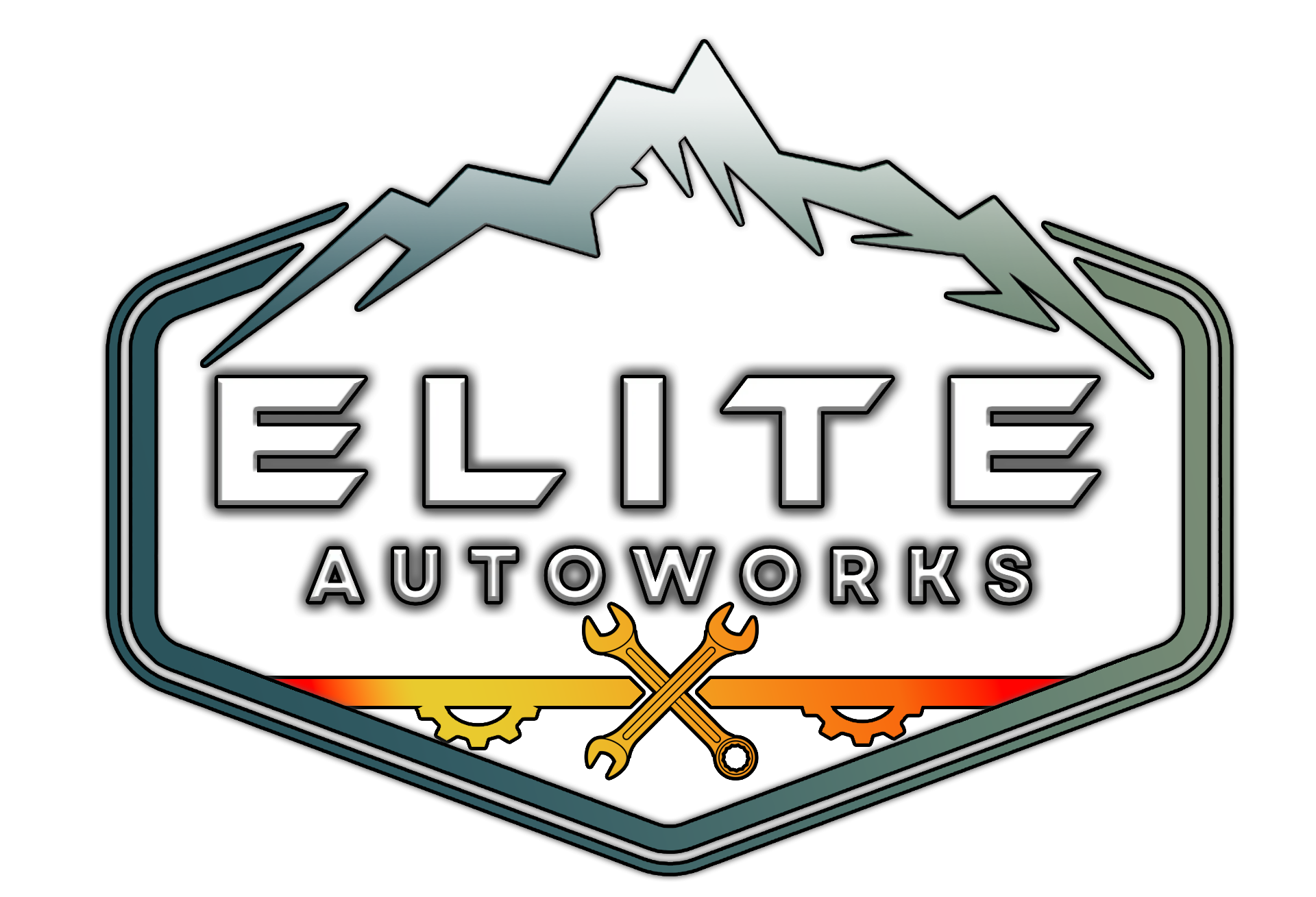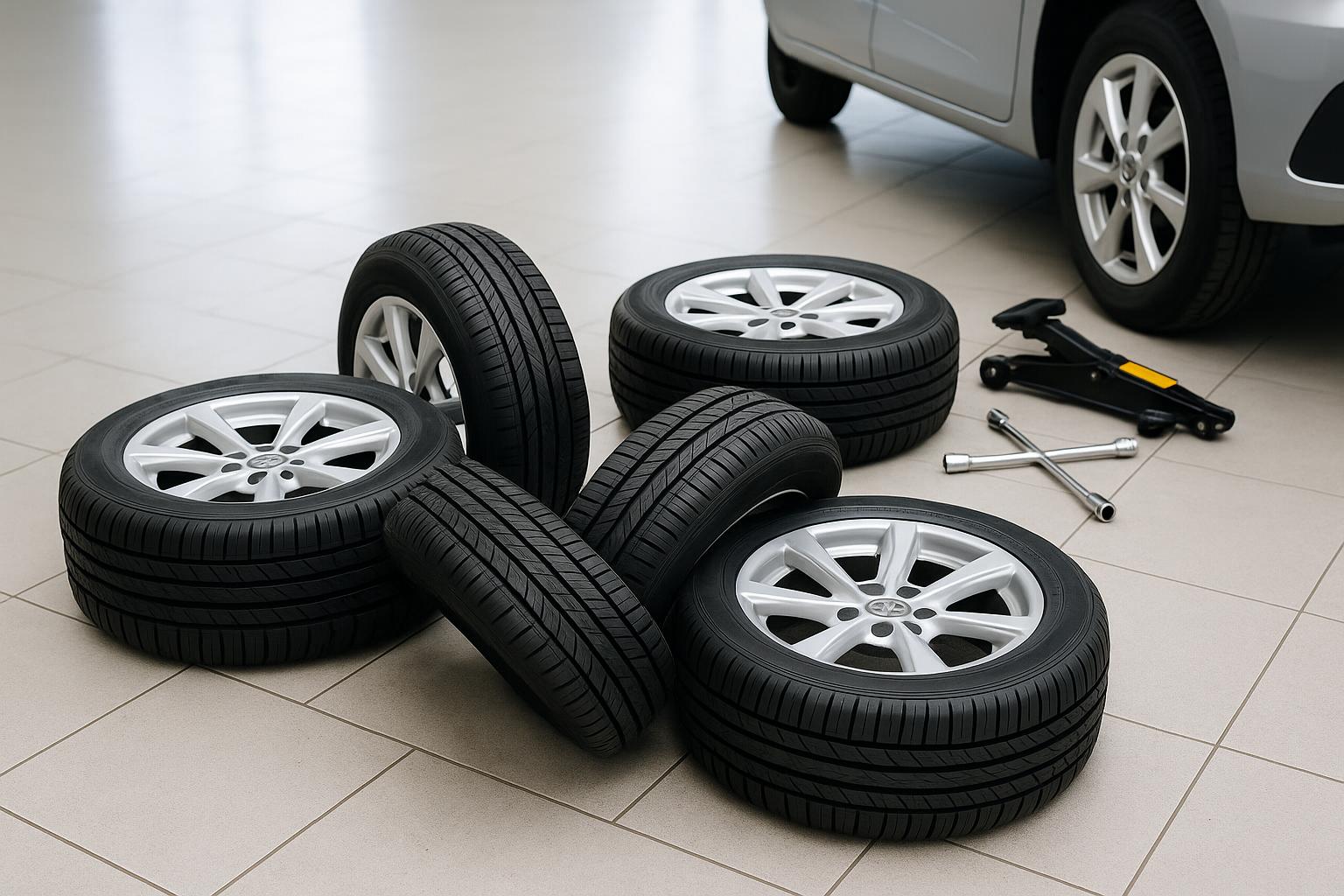Maximizing Your Investment: The Unseen Benefits of Routine Tire Care
Your vehicle’s tires are its only point of contact with the road, playing a crucial role in safety, handling, and overall performance. Yet, they are often overlooked until a problem arises. One of the simplest, most effective, and budget-friendly maintenance tasks you can perform is regular tire rotation. This vital service not only extends the life of your tires but also contributes to significant long-term savings and a safer driving experience. At Elite Auto Works, we understand the importance of comprehensive vehicle care, and that includes helping our Castle Rock community get the most out of their tire investment.
Understanding Tire Rotation: More Than Just Swapping Wheels
Tire rotation involves periodically changing the position of each of your vehicle’s tires. This isn’t just a random shuffle; it’s a calculated process designed to combat uneven tire wear. Different positions on your vehicle cause different wear patterns. For instance, on most front-wheel-drive vehicles, the front tires tend to wear down faster on the shoulders due to the forces of steering and the weight of the engine. Similarly, the rear tires on a rear-wheel-drive vehicle often experience different wear patterns.
Without regular rotation, some tires will wear out much quicker than others, leading to premature replacement and unnecessary expense. By systematically moving tires to different positions, each tire gets to experience varying wear conditions, promoting more uniform wear across the entire set. This balanced wear is key to unlocking longer tire life and maintaining optimal vehicle performance. If you’re looking for expert tire services and rotation in Castle Rock, CO, our team has the expertise to ensure it’s done right.
The Ripple Effect: Benefits Beyond Just Tire Longevity
The advantages of regular tire rotation extend far beyond simply making your tires last longer. These benefits significantly impact your wallet, your safety, and your vehicle’s overall health.
- Maximized Tire Life & Cost Savings: This is the most direct financial benefit. By promoting even wear, tire rotation can help you get thousands of extra miles out of your current set of tires. Delaying the need for a full tire replacement means keeping more money in your pocket. Considering the cost of a new set of quality tires, this can add up to substantial savings over the life of your vehicle.
- Enhanced Safety: Evenly worn tires provide better traction and more predictable handling, especially in adverse weather conditions. Tires with uneven wear can compromise your vehicle’s stability and increase stopping distances. Consistent tread depth across all tires ensures a safer grip on the road. This is particularly important for services like brakes and suspension repair, as tire condition directly impacts their effectiveness.
- Improved Fuel Efficiency: When tires wear unevenly, it can increase rolling resistance. This means your engine has to work harder to move the vehicle, leading to increased fuel consumption. Properly rotated and evenly worn tires roll more smoothly, contributing to better gas mileage and further cost savings at the pump.
- Smoother, More Comfortable Ride: Uneven tire wear can lead to vibrations and a rougher ride. Regular rotations help maintain a balanced and comfortable driving experience.
- Maintained Drivetrain Health: For all-wheel-drive (AWD) and four-wheel-drive (4WD) vehicles, consistent tire circumference is critical. Significant differences in tread depth between tires can strain the drivetrain components, potentially leading to expensive repairs. Tire rotation helps maintain similar wear levels, protecting these sophisticated systems.
- Warranty Compliance: Many tire manufacturers require regular tire rotation as a condition of their tread life warranties. Failing to rotate your tires according to their recommendations could void your warranty, leaving you financially responsible if a tire fails prematurely due to wear issues.
Did You Know? Quick Tire Facts
- The average recommended interval for tire rotation is every 5,000 to 7,500 miles, or roughly every other oil change. However, always consult your vehicle owner’s manual for specific recommendations.
- Tire pressure can change by about 1 PSI (pound per square inch) for every 10°F change in ambient temperature. This makes regular pressure checks crucial, especially with Colorado’s fluctuating temperatures.
- Driving on underinflated tires is a leading cause of tire failure and can reduce fuel efficiency by up to 0.2% for every 1 PSI drop in pressure of all four tires.
- The “penny test” is a simple way to check tread depth. Insert a penny into your tire’s tread groove with Lincoln’s head upside down. If you can see all of Lincoln’s head, your tread depth is below 2/32 inch, and it’s time for new tires.
The “How-To” of Tire Rotation: Patterns and Procedures
While the concept of tire rotation is simple, the actual process involves specific patterns based on your vehicle’s drivetrain (FWD, RWD, AWD, 4WD) and tire type (directional or non-directional). Our ASE Master-Certified technicians at Elite Auto Works are well-versed in these patterns to ensure optimal results.
Common Rotation Patterns:
- Forward Cross (for most FWD vehicles): Front tires move straight back to the rear, while rear tires cross to opposite sides on the front.
- Rearward Cross (for RWD and 4WD/AWD vehicles): Rear tires move straight to the front, while front tires cross to opposite sides on the rear.
- X-Pattern (for FWD, RWD, or AWD/4WD vehicles with non-directional tires of the same size): All tires are moved diagonally – left front to right rear, right front to left rear, etc.
- Side-to-Side (for vehicles with different-sized directional tires on front and rear axles): Tires are swapped from one side to the other on the same axle. This is less common.
It’s also an opportune time to inspect tires for any damage, check and adjust air pressure, and examine the brakes and suspension components that become more visible when the wheels are off. This proactive approach can catch minor issues before they escalate, potentially saving you from a more significant engine diagnostic or repair down the line if tire issues were masking other problems.
Tips for Castle Rock Drivers: Navigating Local Conditions
Living in Castle Rock, Colorado, presents unique driving conditions that can impact tire wear. The hilly terrain, seasonal weather changes including snow and ice, and a mix of highway and city driving mean your tires work hard.
- Mind the Elevation Changes: Frequent uphill and downhill driving can place uneven stress on tires, particularly the front ones during braking on descents. Regular rotations help balance this wear.
- Seasonal Preparedness: As seasons change, so does the road surface and temperature. Ensure your tires are properly inflated and rotated before winter hits and again as warmer weather arrives. This is also a good time to consider if you need specialized tires (like snow tires) and to have your AC system checked for the summer months.
- Watch for Road Debris and Potholes: After winter thaws or heavy rains, road conditions can deteriorate. Hitting potholes can damage tires and throw off alignment, accelerating uneven wear. Drive cautiously and have your alignment checked if you suspect an issue.
- Regular Maintenance is Key: Don’t skip your scheduled maintenance, including oil changes and fluid services. Many shops, like Elite Auto Works, can perform tire rotations during these routine visits, making it convenient.
By understanding these local factors and committing to regular tire rotations, Castle Rock drivers can ensure their vehicles are safer, more efficient, and that their tires last as long as possible. Before embarking on a long drive or purchasing a used vehicle, a pre-purchase inspection should always include a thorough tire check.
Ready to Maximize Your Tire Life and Savings?
Don’t wait until it’s too late. Regular tire rotation is a small investment that pays big dividends in safety, performance, and cost savings. The expert technicians at Elite Auto Works in Castle Rock are here to help you keep your vehicle running smoothly from the ground up.
Frequently Asked Questions (FAQ)
How often should I really get my tires rotated?
Most manufacturers recommend rotating your tires every 5,000 to 7,500 miles. A good rule of thumb is to have them rotated with every oil change. However, your vehicle owner’s manual will provide the most accurate interval for your specific make and model. If you notice uneven wear or your check engine light comes on, it’s always good to have a professional look, as underlying issues can sometimes affect tire wear.
Can I rotate my own tires?
While it’s possible to rotate your own tires if you have the right tools (jack, jack stands, lug wrench) and knowledge of the correct rotation pattern, it can be labor-intensive and requires careful attention to safety. Professional rotation at a shop like Elite Auto Works ensures it’s done correctly, safely, and often includes a brake inspection and proper lug nut torquing.
Does tire rotation affect my car’s alignment?
Tire rotation itself does not directly affect alignment. However, uneven tire wear (which rotation helps prevent) can be a symptom of poor alignment. If your tires are wearing unevenly, it’s a good idea to have your alignment checked in addition to getting them rotated.
What if I have directional tires?
Directional tires are designed to rotate in one specific direction. They can typically only be moved from the front to the rear on the same side of the vehicle, unless they are dismounted and remounted. Our technicians at Elite Auto Works are familiar with all tire types and will use the appropriate rotation pattern.
How long does a tire rotation take?
A standard tire rotation is a relatively quick service, usually taking about 15-30 minutes. If combined with other services like an oil change or inspection, the overall time might be longer.
Why choose Elite Auto Works for tire rotation in Castle Rock?
At Elite Auto Works, we are more than just a repair shop; we are your partners in vehicle maintenance. As a family-owned business with over 20 years of experience and ASE Master-Certified technicians, we offer dealership-level expertise with a commitment to honesty and transparency. We specialize in Japanese imports but service all makes and models. Learn more about us and our dedication to the Castle Rock community.
Glossary of Terms
- ASE Master-Certified: A certification awarded by the National Institute for Automotive Service Excellence, indicating a high level of technical expertise.
- Drivetrain: The group of components in a motor vehicle that deliver power to the driving wheels. This includes the engine, transmission, driveshaft, axles, and differentials.
- Directional Tires: Tires designed with a tread pattern that is optimized for rotation in one specific direction for improved traction and water channeling.
- Non-Directional Tires: Tires with a tread pattern that allows them to be mounted in any position or direction on the vehicle.
- PSI (Pounds per Square Inch): A common unit of pressure measurement, used for tire inflation.
- Rolling Resistance: The force resisting the motion when an object (like a tire) rolls on a surface. Lower rolling resistance generally improves fuel efficiency.
- Tread Depth: The distance from the top of the tread rubber to the bottom of the tire’s deepest grooves. Adequate tread depth is crucial for traction.
- Lug Nuts: Fasteners used to secure a wheel to the vehicle hub. They must be tightened to a specific torque setting.
- Alignment: The adjustment of a vehicle’s suspension components to ensure the wheels are oriented correctly relative to the road and each other. Proper alignment prevents uneven tire wear and improves handling. This is different from services like timing belt and water pump replacement, which relate to engine mechanics.

